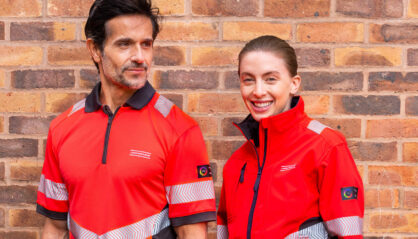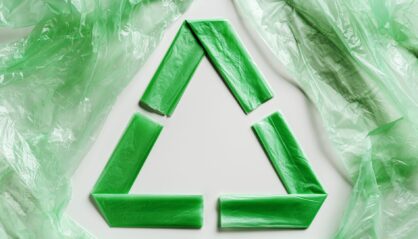The Evolution Of Custom Uniforms – The History Of Workwear

Much like today, uniforms have always been a sign of unity and teamwork. Present since the time of the Romans, workwear has played a significant role. Symbolising status, function and assigned job role, not much has changed for what a uniform can mean to an employee. However, we have fortunately seen improvements when it comes to fabrics, design practices and technology. Throughout history, uniforms have evolved further and further, and today, we can combine our need for functionality, aesthetics, corporate branding and sustainability through custom workwear.
The Origins Of Work Uniforms
The concept of ‘workwear’ dates back as far as the Roman empire. Workwear or uniforms would often serve a functional purpose in battle, but they would also symbolise an individual’s discipline and their dedication to the unity of their army. In addition, their armour would use crests, logos and colours to identify their ranks.
The toga was common during this period, and would signify who the person wearing it was. For example, ‘a plain white toga was worn by all adult male citizens’, whereas a more off white toga ‘with a purple border was worn by magistrates and upper class boys’. Togas that were made of darker coloured wool would be worn if someone was in mourning, and a bleached toga was to be worn by politicians only. Emperors and anyone royal could be seen sporting the royal purple- a colour we still see used today amongst the monarch.
The Industrial Revolution
Whilst togas and roman armour is a form of uniform, the introduction of commercial workwear didn’t really start until the beginning of the industrial revolution. With factories and mass production becoming all the more common, it was important for employees to become more efficient and safe whilst working – hence the invention of uniforms.
‘In the early 19th century, workwear was simple and functional’, and were most often made from cotton and wool. These fabrics were heavier and provided durability as well as protection from the elements. In the 19th century, the making of uniforms was given to local tailors or made at home. In the mid-19th century, the process of industrialisation started to develop and so did uniforms.
‘Mass production and new manufacturing techniques made it easier and cheaper to produce clothing on a large scale’ and this meant that with a rise in factories, the need for standard uniforms for workers became more necessary. Regulated work uniforms allowed for all operations to be streamlined and also fostered a sense of unity amongst workers. This evolution of the standard uniform laid the foundation for the modern corporate branding we see today.
Innovation & Customisation
Since the industrial revolution, we have seen uniforms change in a variety of ways. From the different materials, the production style, the manufacturing techniques and the design technology used to make workwear. In many industries nowadays, custom uniforms have to be multifunctional.
For instance, the traditional chef work uniforms were created in France in the early 1800s. The white chef’s coat and hat ‘was made to convey hygiene, power and rank in the kitchen environment’. However, in modern times, a chef’s work uniform is quite different. Many chefs now wear a double-breasted jacket with flaps. These extra pieces of fabric can be ‘folded over if the clothing was soiled, concealing the dirty material’. Not only does this offer a dual layer of protection against potential stains, but it also means that a ‘chef could wear a supposedly unsoiled jacket for twice as long’. This shift from the traditional all-white chef’s uniforms allows for their workwear to be designed with the ‘practical considerations of a kitchen in mind, making it multifunctional’.
Uniforms can be about much more than just practical attire, ‘a well-made work uniform is the mark of true attention to detail, craftsmanship, and meticulousness that can only come from companies that care about their brand.’ Customisation of workwear has become the standard nowadays, with the majority of companies now choosing to tailor their custom uniforms to their specific needs, whilst also reflecting their identity as a brand. This includes the types of fabric they use in their uniform design. For active job roles, moisture-wicking fabrics would be best, whereas for those working in an industrial setting, it’s common for employees to wear flame-resistant materials.
For instance, in the 1990s, there was an emphasis on health and safety laws within the workplace. This meant that PPE (Personal Protective Equipment), was provided in manual labour roles. PPE typically ‘includes clothing, eyewear, protective headwear, footwear, and a range of other accessories designed to minimise the likelihood of manual workers and trades getting injured, while also being comfortable.’ PPE is made to be lightweight and tear-resistant. Commonly created using ‘polypropylene’, this breathable, non-woven fabric will help employees protect themselves from hazards.
Embracing Sustainability
In addition to the design of uniforms now becoming more custom to the individual and the job role, many companies are also choosing to prioritise sustainability. With so many advancements in the fabrics used, how textiles can now be recycled and how available design technology is, creating eco-friendly uniforms is a great way for a company to promote a healthier planet.
Here at Jermyn Street Design, we have over 40 years of experience being dedicated to bringing about environmental, social and governance change within the uniform sector.
When it comes to creating custom workwear, we are firm believers that ‘conducting business should always be accompanied by respect for both people and the environment’. With this in mind, we always strictly comply with all regulations, codes, and legislative mandates to further protect the planet.
We believe that every uniform can be green and this can be achieved whilst also paying attention to each client’s ‘unique brand, specific needs and existing operations’. As well as using manufacturing processes which ‘actively reduce carbon emissions, conserve energy and water, minimise waste generation, and utilise eco-friendly materials’. We also aim to create custom workwear pieces that use 80% sustainable materials, methods and sources by 2025. The functionality of uniforms can now be combined with our need to protect the environment by choosing more eco-friendly materials and sustainable manufacturing practices.
Bespoke Uniforms Designed Around Your Needs – Jermyn Street Design
As mentioned above, here at JSD, we are dedicated to creating sustainable custom workwear, which fits our client’s specific needs. As well as choosing the most environmentally-friendly practices, we also use our expert eye to design uniforms which speak directly to a brand’s ethos. When you enquire, you will be able to talk about your own uniform requirements with our sales team.
Each and every one of our clients that we work with, has their own dedicated account manager who can discuss with you in detail every stage of our uniform design process. Firstly, we will work with the client on what ideas they currently have and what this would look like. After, we will enter the research stage, where we will take a deeper look into the specific industry. The next stage includes us developing and manufacturing the custom workwear. Once the uniform has been finalised to the client’s satisfaction, we will provide support in its implementation, ensuring that each uniform is customised to meet specific needs. Finally, we can help with any logistical or distribution requirements. Get in contact with our team today if you’re seeking to improve your company’s image and improve customer perception and experience.





